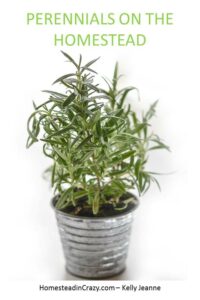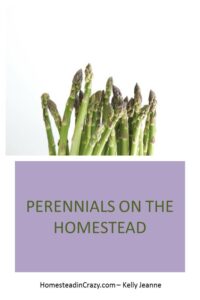PERENNIALS ON THE HOMESTEAD
Perennials – What they are and how they grow.
In this post I will explain what a perennial is and how to grow them, including the light they need, the watering situation, how to start them, and where to put them.
I remember the first time I grew a perennial in a garden. I kept waiting for the time to pull it out like the rest of the plants, but low and behold that little plant never went down like the rest. I finally figured out it was not going to because it was a perennial. What is a perennial you ask???

Lavender smells amazing and comes back next year
What is a perennial:
● Definition:
Perennial typically describes things that are permanent, constant, or repeated.
● Perennial plant:
A plant that comes back year after year; or at least in certain zones.
● Hardy Perennials
Hardy perennials are plants that come back every year no matter where you live. Some examples would be trees like oak and pine, weeds like dandelion, and some garden herbs.
● Tender Perennials
Tender perennials are plants that are perennials in certain areas and annuals in other areas like Rosemary or Apricot trees.
● Perennials versus Biennials
Perennials come back every year, but biennials only survive two years. They make seeds the second year and may reseed themselves making some think they are perennials.
● Perennials versus annuals
Again, perennials come back year after year, but annuals have to be started over every year and some perennials can become annuals depending on where you live. In zone six or colder Rosemary is an annual. In zone 7 it can be a perennial, but if the winter gets too cold it will die out. Zone 8 and beyond it is a perennial.
● Perennials to love
A lot of herbs are perennials such as Lavender, chamomile, rosemary in some places and mints. Strawberries are perennial in most areas of the U.S. Also fruit trees are perennial, but it depends on where you live which ones are perennial. For instance, if you live in zone 8 or 9 then pomegranates, citrus, or coconut might be perennial for you. But if you live in the northern tier like zones 4, 5 of 6 then apples, peaches, and even apricots may be perennial for you. These types of fruit trees need what is called “chilling hours” and will not do well in zones 7 or higher.

Rosemary is an herb that is also a perennial
What is the best way to grow perennials
If you are talking fruit trees, buy them. Most of them are set on a separate root system, unless you want standards which can reach well over 20 feet. The dwarf and semi-dwarf have special root systems added to them to keep them small.
Most of the perennials I grow are herbs. It is best to start them indoors and plant them out after they are about 5 to 6 inches tall in the containers. I place most of them in the garden in direct sun, but there are a few that prefer shade of partial shade. Check your seed packets or ask the person you purchase your plants from which that particular one prefers.
Perennials are an awesome way to know that your garden will be there next year and every year for a very long time.
How do you plant perennials
● Start from seed
There is a much larger selection if you start from seed. You can purchase organic or open-pollinated seed for just about ANY perennial herb.
● Transplant after the first true leaves come out
The first leaves are called cotyledon leaves. The second set, which look like the plant, are the first set of true leaves. That is when they should be separated and put in their own containers.
● If you are leaving them in containers…
You may need to transplant them once a year into a slightly larger container to accommodate the root systems.
● If you are putting them in the garden…
You can take them out and plant them when they are approximately 4 to 6 inches tall. Place them in the dirt where you want them, depending on the plant, about where the root system was in the container, water the roots, pull the dirt in around the roots covering well, and water them again. This is called watering them in and needs to be done to any plant, perennial or not.

Asparagus is an edible perennial
What is the value of a perennial
A perennial is valuable for several reasons. Depending on what the plant is it may be medicinal or culinary which either way is good. It comes back every year so you know that you have it and do not have to get another one. They do duplicate themselves in most cases whether by seed or by root so you can get more without purchasing more and they are usually the first sign that it is time to start growing again which always makes me happy!! J
How many hours of light does a perennial need?
● All perennials need light ….
Some need more than others
● Light loving perennials ….
These will go in direct sun and need at least 6 hours a day
● Shade lovers ….
These will either want dappled sun or full shade. Again, check on your seed packet or with the person you purchase from to know for sure what they will want in your area.
How much water does a perennial need?
● Some perennials are thirsty little plants ….
They may need up to a gallon every few days
● Some are less thirsty ….
These may only need a gallon or so a week if outside
● Certain perennials are not very thirsty at all ….
Those perennials may only need water once a month, like cacti and succulents
● Then there are the “no water hardly ever” guys….
The ones that only get water once a year or so, like prickly pears
Perennials in YOUR garden…
These are awesome plants to have in your garden whether it be a large one or containers, everyone should have some perennials. If you like to cook try garlic or onion chives. If you are more into medicinal herbs try chamomile and the mint family (always in containers for the mint as they are invasive and will take EVERYTHING over in your yard if let loose). A tea garden you say, I suggest again chamomile and some lemon balm makes a great tea. Or if you are just into vegetables try asparagus or rhubarb. There is a perennial for everyone I promise you. Give them a try and learn to love your garden even more.
If you want more information about the differences in perennials, biennials and annuals check out my posts here and here. Or you could look here for the Mother Earth News Homestead take on them.
I hope you enjoyed this and learned a little something for next time. I love helping beginning gardeners learn to grow their own. Let’s kick this thing in the bud, lol.
Gonna run for now. Talk to you soon!!!
Love you bye,
Kelly Jeanne